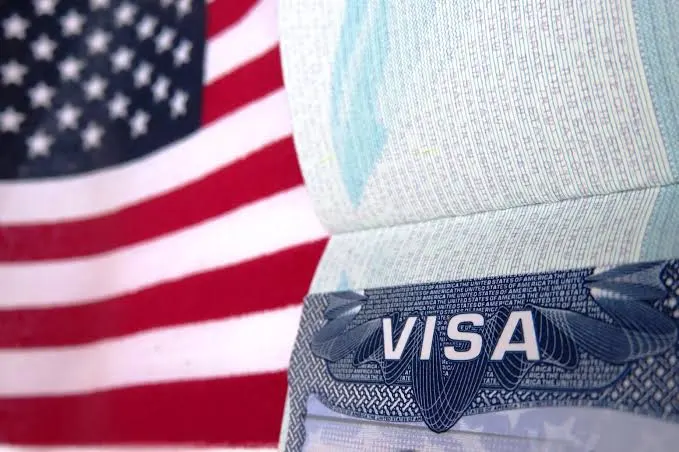The manufacturing sector in the United States has long been a cornerstone of economic growth, offering diverse employment opportunities to millions of workers.
With the evolving global landscape and technological advancements, manufacturing continues to adapt, providing new opportunities, including for international talent seeking visa sponsorship.
This blog post explores the landscape of manufacturing jobs in the USA for 2024, focussing on roles that offer visa sponsorship.
Overview of the Manufacturing Industry
Manufacturing in the USA contributes significantly to the economy, encompassing a vast array of industries such as automotive, aerospace, electronics, and consumer goods.
These advancements have created a demand for skilled labor and opened doors for international professionals seeking to work in the United States.
Key Trends in Manufacturing
- Automation and Robotics: The integration of AI and robotics is revolutionizing manufacturing processes, increasing efficiency and productivity. This trend is creating opportunities for engineers and technicians skilled in robotics and automation.
- Sustainability: With an increasing focus on sustainable practices, manufacturers are seeking experts in green technologies and sustainable manufacturing processes.
- Reshoring: Many companies are bringing manufacturing back to the USA to reduce dependency on overseas production, which is boosting job opportunities domestically.
Visa Sponsorship Opportunities
Several visa options are available for international workers seeking employment in the U.S. manufacturing sector. Here’s a look at some of the most common visa types:
H-1B Visa
The H-1B visa is a popular choice for skilled workers in specialty occupations, including engineering and technology roles in manufacturing. Companies sponsoring H-1B visas must demonstrate that the position requires specialized knowledge and that the candidate has the necessary expertise.
- Eligibility: Requires a bachelor’s degree or higher in the specific field.
- Duration: Initially granted for three years, extendable up to six years.
- Application Process: Employers must file a Labor Condition Application (LCA) and submit a petition to the USCIS.
L-1 Visa
The L-1 visa is designed for international companies transferring employees to their U.S. offices. This is ideal for multinational manufacturing corporations.
- Eligibility: Candidates must have worked for the company abroad for at least one year.
- Duration: L-1A visas are for managers and executives (up to seven years), and L-1B for employees with specialized knowledge (up to five years).
O-1 Visa
The O-1 visa is for individuals with extraordinary ability or achievement in their field, including manufacturing and engineering.
- Eligibility: Requires evidence of extraordinary ability, such as awards or significant contributions to the field.
- Duration: Initially granted for up to three years, with extensions available.
Top Manufacturing Sectors Hiring in 2024
Automotive Industry
With the shift towards electric vehicles (EVs), the automotive industry is investing heavily in new technologies.
Companies like Tesla and General Motors are frequently hiring engineers and technicians and are open to sponsoring visas for the right talent.
Aerospace
The aerospace sector is another robust area of growth, with companies like Boeing and Lockheed Martin seeking skilled workers in design, engineering, and production.
Electronics and Semiconductors
The demand for semiconductors is soaring, driven by the tech industry. Companies are looking for experts in semiconductor manufacturing, offering visa sponsorship to international engineers and scientists.
Consumer Goods
Consumer goods manufacturing is diversifying, with a focus on sustainable and innovative products. Companies are hiring for roles in product development and process improvement.
How to Secure a Manufacturing Job with Visa Sponsorship
Research and Target Companies
Start by identifying companies that have a history of sponsoring visas. Use resources like the H-1B Visa Sponsors Database to find potential employers. Focus on companies in growth sectors like automotive and aerospace.
Build a Strong Resume
Tailor your resume to highlight your skills and experience relevant to the manufacturing industry. Emphasize any experience with automation, robotics, or sustainability, as these are high-demand areas.
Network
Leverage professional networks like LinkedIn to connect with industry professionals. Attend industry conferences and events to meet potential employers and learn about job openings.
Prepare for Interviews
Demonstrate your expertise in manufacturing technologies and practices during interviews. Be prepared to discuss how your skills align with the company’s needs and how you can contribute to their growth.
Legal Preparation
Work with an immigration attorney to understand the visa application process and ensure all your documents are in order. This will help streamline the sponsorship process.
Challenges and Considerations
Visa Quotas
One of the main challenges is the cap on H-1B visas, which are subject to an annual quota. It’s crucial to apply early and work with employers familiar with the process.
Cultural and Workplace Adjustments
Adjusting to a new work culture can be challenging. It’s important to be adaptable and open to learning about the U.S. workplace environment.
Staying Informed
Stay updated on immigration policies, as changes can impact visa availability and sponsorship opportunities.
FAQs
1. What manufacturing jobs are available in the USA with visa sponsorship?
Manufacturing jobs with visa sponsorship in the USA for 2024 can range from machine operators, assembly line workers, and production supervisors, to quality control technicians and engineers.
The roles depend on the specific company and industry, such as automotive, electronics, and food manufacturing.
2. Which visa types are commonly used for manufacturing job sponsorship in the USA?
Common visa types for manufacturing jobs include the H-1B (for skilled workers), H-2B (for temporary or seasonal workers), and EB-3 (employment-based visa for unskilled workers).
Employers typically determine the appropriate visa based on the job’s requirements and the worker’s qualifications.
3. What qualifications are required to apply for a manufacturing job with visa sponsorship in the USA?
The qualifications vary by position, but common requirements include a high school diploma or GED, relevant technical skills, and in some cases, prior manufacturing experience.
For skilled roles like technicians and engineers, a degree in engineering or a related field may be necessary.
4. How do I find manufacturing companies offering visa sponsorship in the USA?
You can search for visa-sponsored manufacturing jobs on job boards like Indeed, Glassdoor, and LinkedIn. Additionally, specialized websites like myvisajobs.com provide listings of companies offering visa sponsorships in various industries, including manufacturing.
5. What is the average salary for manufacturing jobs in the USA with visa sponsorship?
The salary for manufacturing jobs varies based on the position, location, and experience. Entry-level positions such as machine operators may earn around $30,000 to $40,000 per year, while more skilled positions like production managers or engineers can earn upwards of $70,000 to $90,000 annually.
Conclusion
The U.S. manufacturing sector offers promising opportunities for international talent in 2024. With the right skills, preparation, and networking, securing a manufacturing job with visa sponsorship is achievable.
By focusing on key growth areas like automation, sustainability, and reshoring, candidates can position themselves for success in this dynamic industry.
For further resources, consider visiting:
- U.S. Citizenship and Immigration Services (USCIS)
- Department of Labor: Foreign Labor Certification
- Manufacturing USA
By leveraging these resources and staying proactive, international professionals can navigate the complexities of visa sponsorship and build successful careers in the U.S. manufacturing industry.










10 comments
I don’t think the title of your article matches the content lol. Just kidding, mainly because I had some doubts after reading the article.
Thank you for your sharing. I am worried that I lack creative ideas. It is your article that makes me full of hope. Thank you. But, I have a question, can you help me?
Your article helped me a lot, is there any more related content? Thanks!
Your point of view caught my eye and was very interesting. Thanks. I have a question for you. https://accounts.binance.com/de-CH/register-person?ref=UM6SMJM3
Your point of view caught my eye and was very interesting. Thanks. I have a question for you.
Can you be more specific about the content of your article? After reading it, I still have some doubts. Hope you can help me.
Your article helped me a lot, is there any more related content? Thanks!
Thanks for sharing. I read many of your blog posts, cool, your blog is very good.
Your point of view caught my eye and was very interesting. Thanks. I have a question for you.
Thanks for sharing. I read many of your blog posts, cool, your blog is very good.